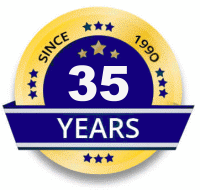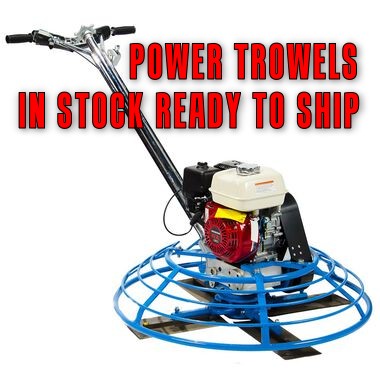LGMG AS1932 Scissor Lift Hydraulic Electric 19' x 32" wide
Safety Information
LGMG AS1932E Electric Scissor Lift
Chapter 1 Safety
Danger
Death or severe injuries can be caused if the instructions and safety regulations in this manual are not followed.
Warning
Operation of the machine is forbidden, unless:
The safe operation rules of the machine are understood and practiced.
Dangerous conditions are avoided. All safety regulations shall be acknowledged and
understood before the next step.
The pre-operation inspection is always completed before operation of the machine.
The function test is always made before operation of the machine.
The workstation is inspected and tested.
The machine is used for its design purposes
The manufacturer’s instruction and safety regulations-the safe operation manuals and machine labels, shall be read, comprehended and followed.
The safety regulations for user and the site regulations shall be read, comprehended and followed.
All applicable laws and regulations of the government are read, understood and
followed.
The appropriate training on safe operation of machine has been completed.
Notice
Classification of hazards
The meanings of symbols, color codes and characters of LGMG North America’s products are as follows:
Security warning symbol: are used for warning of potential personal injuries.
Observe all safety instructions below these signs, to avoid situations causing potential personal injury and death.
Red: Signifies dangerous situations. If not avoided, will result in personal death or severe injury.
Orange: Signifies dangerous situations. If not avoided, may result in personal death or severe injury.
Yellow: Signifies dangerous situations. If not avoided, may result in minor or intermediate personal injury.
Blue: Signifies dangerous situations. If not avoided, property loss or damage can occur.
1.1 Description
This machine is a mobile elevating work platform, consisting of a work platform on a scissor mechanism. It is electrically powered and drive power is provided by electric motors.
1.2 Maintenance of Safety Signs and Decals
Replace any missed or damaged safety signs or decals. If necessary, use mild soap and water to clean safety signs. Do not use solvent-based cleaners because they may damage the safety sign material
1.3 Workstation Safety
Electrocution Danger
This machine is not electrically insulated and does not provide protection from touching or getting close to electrical power lines. Please keep a safe distance from power lines and power equipment according to the applicable laws and regulations. Refer to the following table for safe approach distances for power lines.
Table 1 Minimum Safe Approach Distance
Voltage Required Clearance
0 to 50KV 10ft (3.05m)
50KV to 200KV 15ft (4.6m)
200KV to 350KV 20ft (6.10m)
350KV to 500KV 25ft (7.62m)
500KV to 750KV 35ft (10.67m)
750KV to 1000KV 45ft (13.72m)
Always take into account the influence of strong or gusty winds on the platform and also on the swinging of the electrical power lines.
Stay away from the machine if it contacts a live electric wire. Do not touch or operate the machine from the ground or the platform before cutting off the power supply.
Do not operate the machine in inclement weather.
Do not use the machine as a ground for welding. This could damage electrical
components on the machine.
Do not touch the battery charger when charging the batteries.
Tip Over Hazard
The personnel, equipment, and material on the platform shall not exceed the
maximum bearing capacity of the platform and the extending platform.
Refer to Chapter 10 – Specifications for model capacities.
1) The platform can only be elevated on flat, solid ground.
2) The maximum elevated drive speed for models AS1930/AS1930EAS1932E/
AS2632E/AS2646E/ AS3246E/AS4046E/ AS4650E/AS1932/AS2632/ AS2646/ AS3246/AS4046/AS4650 is 0.5mph (0.8 kph).
The maximum elevated drive speed for
models SS1230E/SS1432E/SS1932E is 0.31
mph (0.5 kph).
3) Do not use the tilt alarm as a level indicator.
The tilt alarm only sounds when the machine is severely tilted.
4) If the tilt alarm sounds: lower the platform and move the platform to flat, solid ground. If the tilt alarm sounds when elevating the platform, lower the platform immediately.
5) If the machine is used outdoors, do not elevate the platform when wind speed is
above 28mph (12.5 m/s). If wind speed exceeds the limit after elevating the platform, immediately lower the platform and stop all machine operation.
6) If the machine is used indoors, do not elevate the platform when wind speed is above 0mph (0m/s).
7) The ambient temperature range for use of this machine is -4℉to104℉(-20℃ to 40℃)
8) The relative humidity for use of this machine shall be no greater than 90% (at 68℉ [20℃]).
9) The allowable voltage fluctuation of the machine is ±10%.
10) Do not increase the surface area of platformor load. Increasing the exposure area in wind will reduce the stability of machine.
11) When the platform is caught, stuck or blocked by a nearby item and is unable to normally move, do not try to release the platform using the platform controller. All personnel must be removed from the platform before releasing
the platform using the ground controller.
12) Be cautious and lower drive speed when the machine is fully lowered and driving on an uneven road, a gravel road, an unstable or smooth surface, near a hole, or on a slope.
13) Do not drive in high-speed descending any slope.
Caution
Make sure slow speed (turtle) is selected before descending any slope.
14) Do not drive the machine on any uneven or unstable roads or in any other dangerous conditions, when the platform is elevated.
15) Do not push off or pull toward any object outside of the platform.
Maximum allowable manual force
Model Manual Force
SS1230E Indoor: 400N Outdoor:200N
SS1432E Indoor use only:400N
SS1932E Indoor use only:400N
AS1930 Indoor use only:400N
AS1932 Indoor: 400N Outdoor:200N
AS1930E Indoor use only:400N
AS1932E Indoor: 400N Outdoor:200N
AS2632 Indoor use only:400N
AS2632E Indoor use only:400N
AS2646 Indoor: 400N Outdoor:200N
AS3246 Indoor: 400N Outdoor:200N
AS4046 Indoor use only:400N
AS2646E Indoor: 400N Outdoor:200N
AS3246E Indoor: 400N Outdoor:200N
AS4046E Indoor use only:400N
AS4650 Indoor: 400N Outdoor:200N
AS4650E Indoor: 400N Outdoor:200N
16) Do not use the machine as a crane.
17) Do not place, anchor, or suspend any load from any part of the machine.
18) Do not push the machine or other items using the platform.
19) Do not operate the machine when the chassis tray is pulled out.
20) Do not lean the platform against any nearby structure or wall.
21) Do not modify or limit the use of the limit switch.
22) Do not bind or tie the platform to a nearby structure or wall.
23) Do not place the load outside the platform guard rail.
24) Do not modify or change the aerial work platform without the written consent of the
manufacturer. Installing an additional device used for carrying tools or other materials on the platform, pedal, or guard rail will increase platform weight, platform surface area, and load.
25) Do not modify or damage any safety or stability related parts of the machine.
26) Do not replace any key stability-related parts with those with different weights or specifications.
27) It is forbidden to use a battery weighing less than the original battery. The battery installed on the chassis is used and counterweight and is vital for the stability of machine. Every battery has a different weight (as detailed in
the following table).
Table 2 Battery Weights
Model Battery weight
SS1230E 55lb (25Kg)
AS1930
AS1930E 62lbs (28Kg)
AS1932
AS1932E
AS2632
AS2632E
AS3246 66lbs (30Kg)
AS3246E
AS2646
AS2646E
Model Battery weight
SS1432E
SS1932E
AS4046 86lbs (39Kg)
AS4046E
AS4650
82lbs (37Kg)
AS4650E
The minimum weight of battery tray (including the battery) on the chassis varies with the model type as detailed in the following table.
Table 3 Battery Tray Weights
Model Weight of battery tray and batteries
SS1230E 173lbs(78.3Kg)
SS1432E 234lbs(106Kg)
SS1932E
AS1930
AS1930E
AS1932 322lbs(146Kg)
AS1932E
AS2632
AS2632E 331lbs(150Kg)
AS3246
AS3246E 346lbs(157Kg)
AS2646
AS2646E
AS4046E
AS4046 425lbs (193Kg)
AS4650
AS4650E 478Ibs (216.6Kg)
28) Do not place the steps, ladders, or scaffolding in the platform or lean them against any part of the machine.
29) Tools and materials, evenly distributed and able to be safely moved by the operator in the platform, can be carried in the platform only.
30) Do not use the machine on a movable surface or vehicle.
31) Keep all tires in good condition and appropriately tighten the lug nuts.
Crushing Hazards
Do not place arms, hands, or fingers in any position where there is a hazard of potential crushing by the machine’s scissors.
When the machine is being driven from the ground using the controller, use good judgment and carefully plan the travel path. Keep a safe distance between the operator, machine and any fixed objects, walls, or buildings.
Hazards When Operating on a Slope
Do not drive the machine on a slope that exceeds the slope and side slope rating
of the machine. The rated value of slope is applicable to a stowed machine.
Maximum slope rating, stowed position: 25%(14°)
Maximum side slope rating, stowed position: 25%(14°)
Note: Slope rating is subject to ground conditions and adequate traction.
Falling Hazards
All workers in the platform must use approved safety harnesses and attach the lanyard to the provided anchor points in the platform. Each anchor point is limited to one lanyard.
Do not climb on or sit on the guard rail of the platform. Firmly stand on
the platform floor at all times.
Do not climb down the platform scissors when the machine is elevated.
Keep the platform floor free from debris.
Shut down the platform door before operation.
Do not operate the machine if the guard rail is not correctly installed.
Do not enter or exit the platform unless the machine is in the stowed
position.
Crash Hazards
Pay attention to any items or obstacles within the machine’s sight line and in any blind spots when starting or running the machine.
Pay attention to the position of the extending platform when moving the
machine.
Check the workstation to avoid any overhead barriers or other possible
hazards in the work site.
Pay attention to any crushing hazards when holding the guard rail
of the platform.
The operator must follow the manufacturer’s service rules for personal protection equipment, the service rules for the workstation, and the laws and regulations made by the local government.
Observe and follow the traveling arrow and the turning direction
arrows on the platform controller and the platform’s label and nameplate.
Do not operate the machine on the line of any crane or movable overhead machine, unless the crane controller is locked and/or the potential bump prevention measure
is taken.
Dangerous driving or careless operation when running the machine are strictly prohibited.
The platform can be lowered only when there are no personnel or
barriers below the platform.
Limit travel speed according to ground conditions, traffic, road grade, personnel position, or any other possible bump factors.
Component Damage Hazards
Do not charge the batteries with anything more than a 24V battery charger.
Do not use the machine as a ground for welding. This could cause damage to the electrical components on the machine.
Explosion and Fire Hazards
Do not operate or charge the machine in a location with a potential for inflammable or explosive gas or particles.
Machine Damage Hazards
Do not use a damaged or malfunctioning machine.
Make a complete operational and function check before each shift.
Attach a tag on a damaged or malfunctioning machine immediately and stop all operation.
Be sure to perform all maintenance and operation according to the instructions in this manual.
Be sure to keep all labels and decals at the appropriate locations. Replace
any that are not legible.
Be sure to keep this manual in the manual box of the platform.
Personal Injury Hazards
Do not operate the machine if it is leaking hydraulic oil. Leaking
hydraulic oil under pressure can pierce or burn skin.
Severe injury may result if any component below the cover is touched by mistake. Only trained technicians can perform maintenance to the components under the cover. The operator shall only perform maintenance before the pre-operation inspection. Be sure to keep all compartments closed and locked during operation of the machine.
1.4 Battery Safety
Combustion hazards
The battery contains acid. Wear protective clothing and safety goggles when performing maintenance on the battery.
Take measures to prevent acid from overflowing out of the battery or being touched. Neutralize the overflowed acid material from the battery with soda and water.
Explosion danger
Keep the battery away from any sparks or open flames. The battery can release an explosive gas.
Do not touch the battery terminal or the cables with any tool that may cause a spark.
When the vehicle stops for a long time, it is necessary to turn off the
main power switch.
Component damage hazard
Do not charge the battery with more than a 24V battery charger.
Electrocution/Burn hazards
The battery charger can be connected to the grounded AC three-wire power socket.
On a daily basis, check to see if the wire cable, electric cable and wiring
are damaged. Replace the damaged items before the operation.
Take measures to prevent electric shock from touching the battery terminals. When working on the electrical circuits, remove all jewelry and metallic objects. The battery charger can be connected to the grounded AC three-wire power socket.
1.5 Lock After Each Use
1) Choose a safe parking position which is solid and horizontal ground where there are no barriers or heavy traffic.
2) Lower the platform.
3) Rotate the key switch to the “OFF” position and pull out the key, to avoid unauthorized use.
4) Charge the battery
5) Disconnect and remove the platform control box
6) Store in a safe location |











